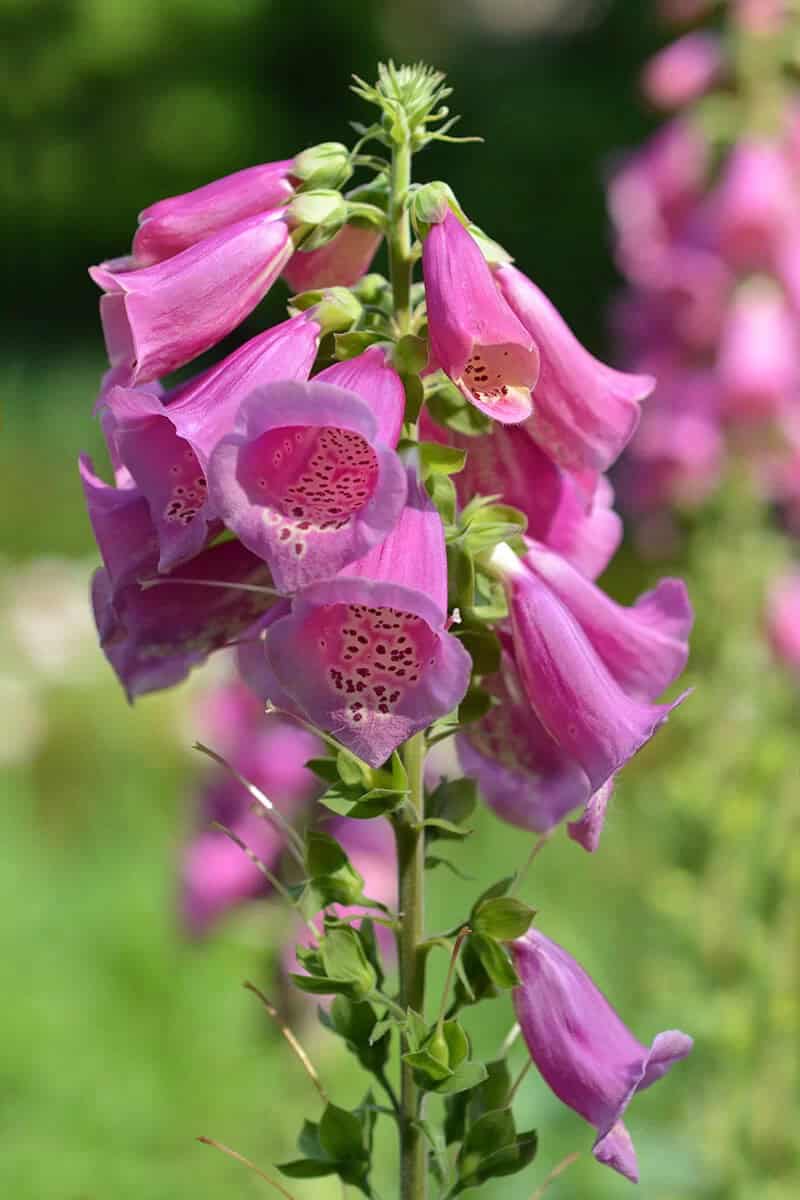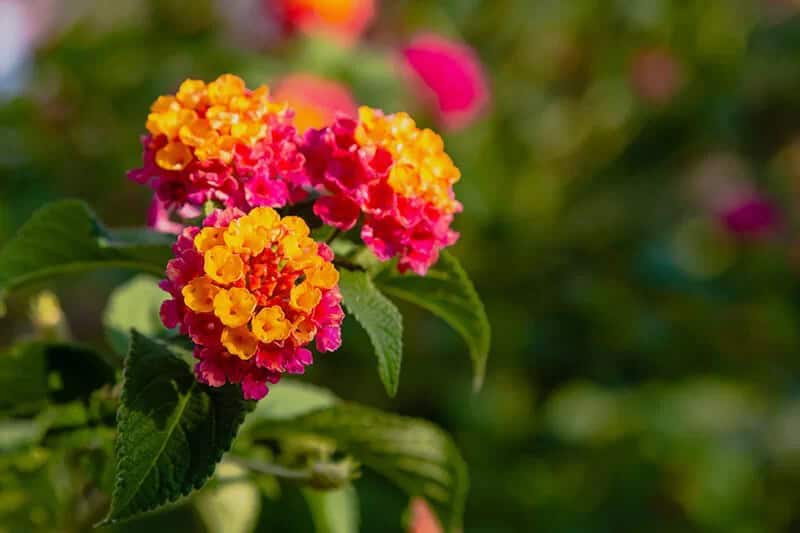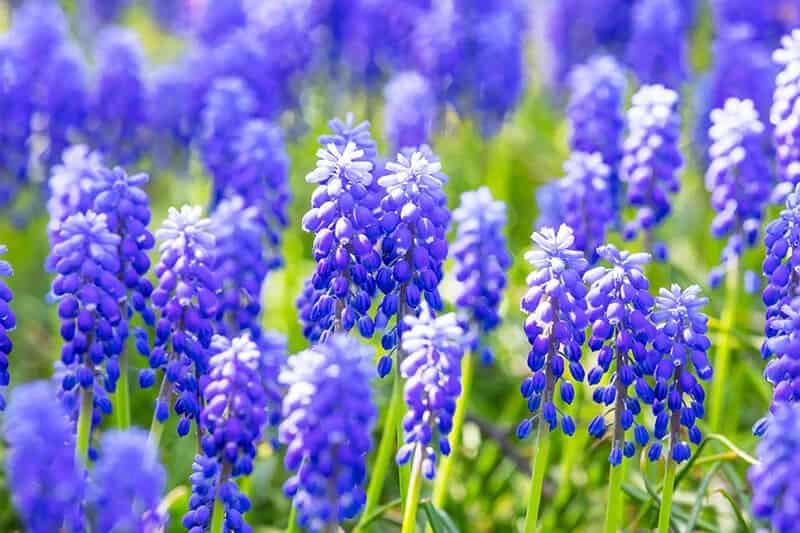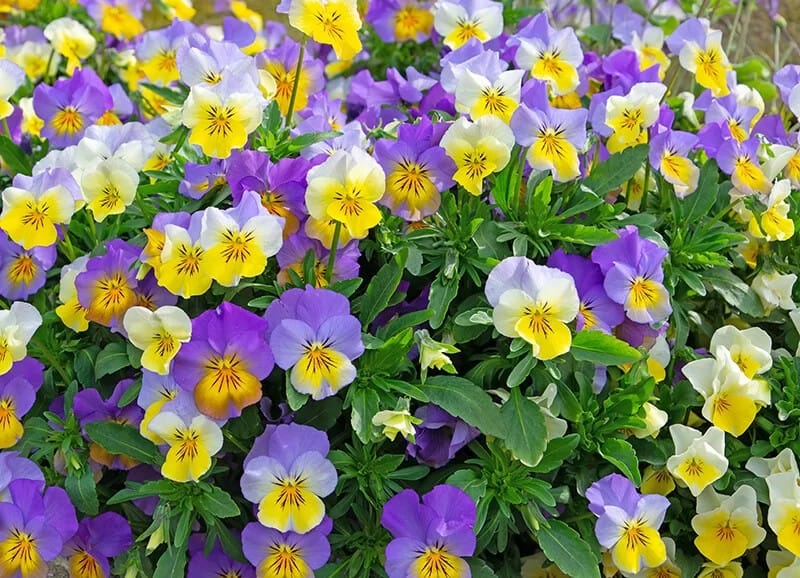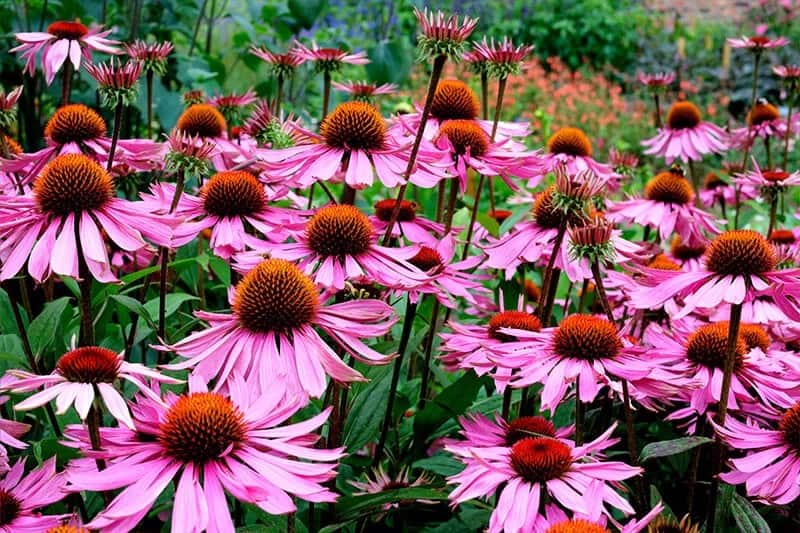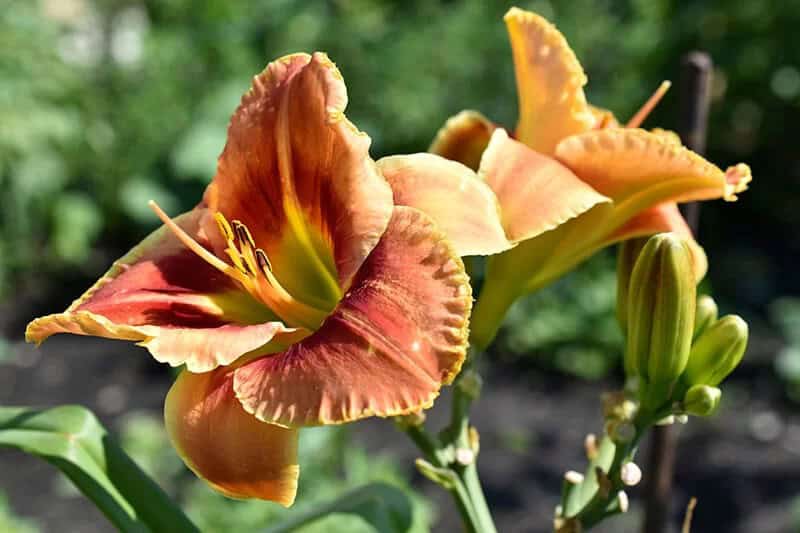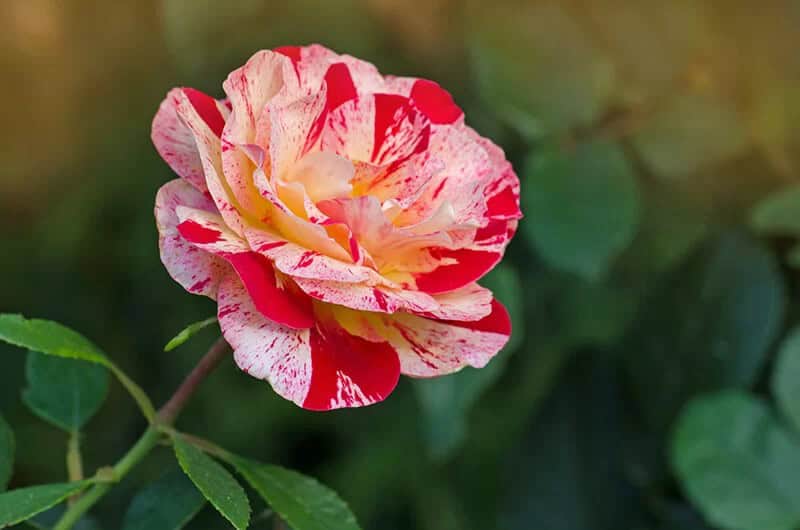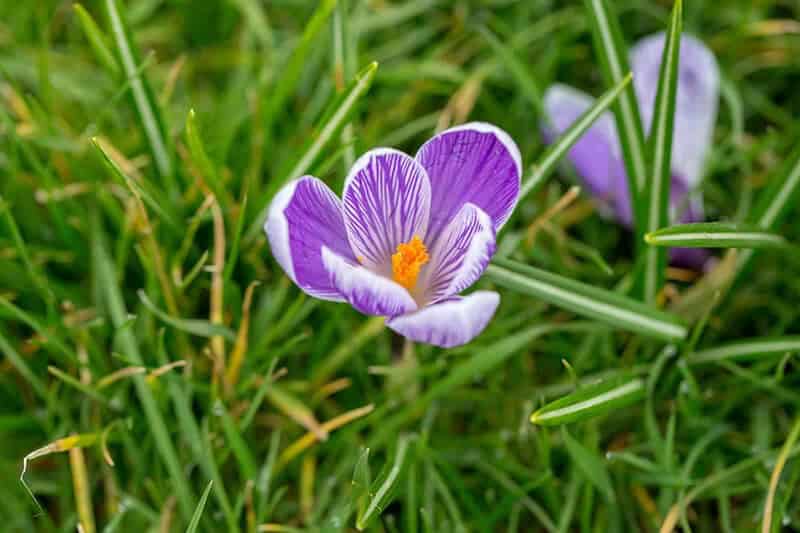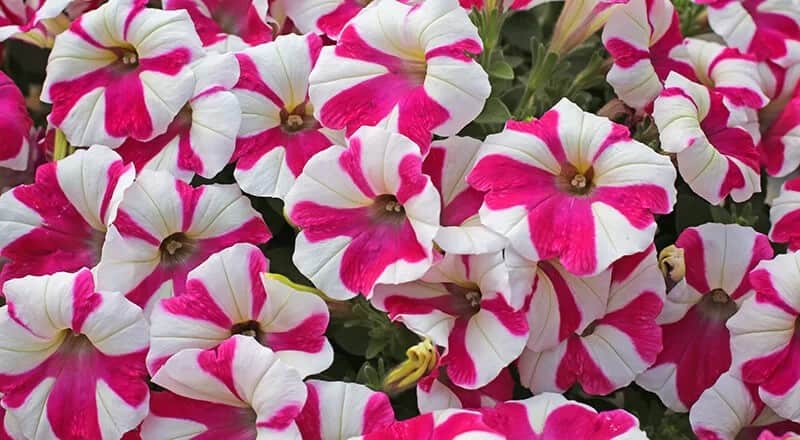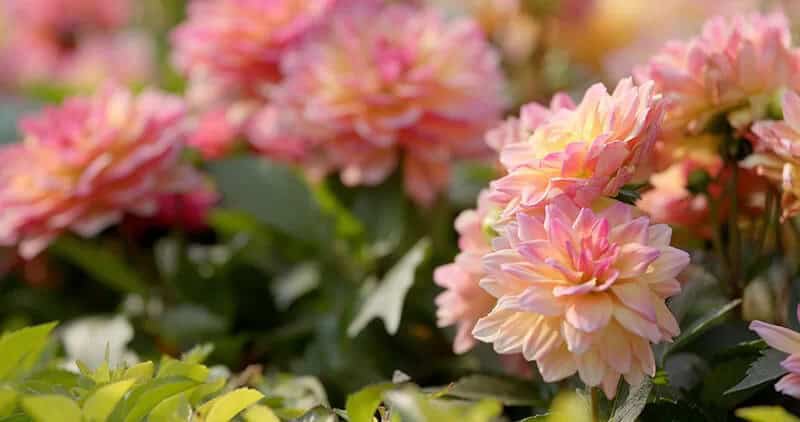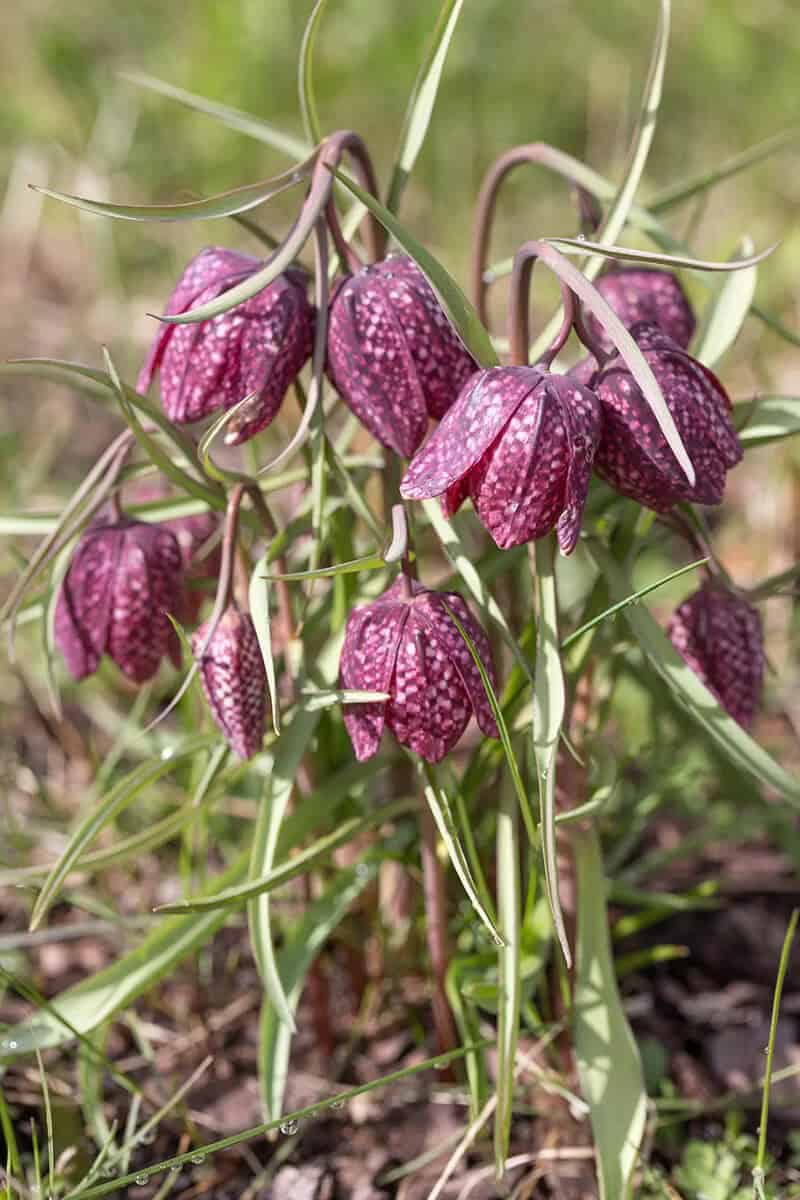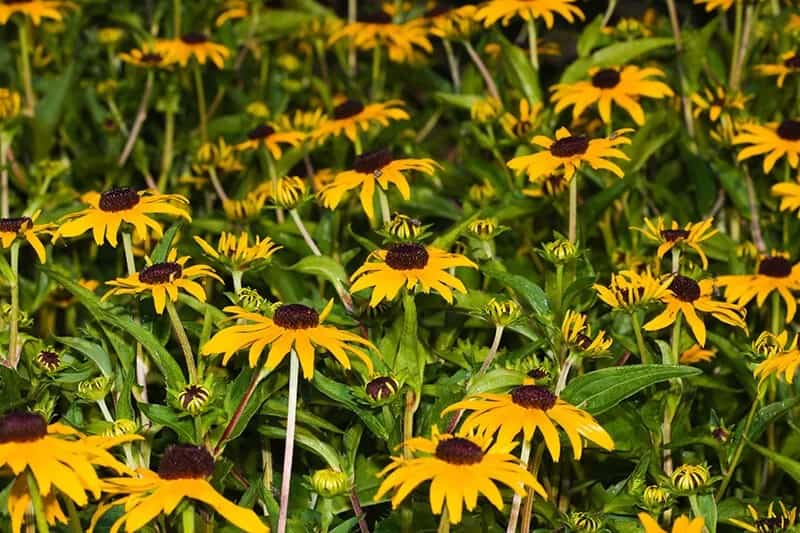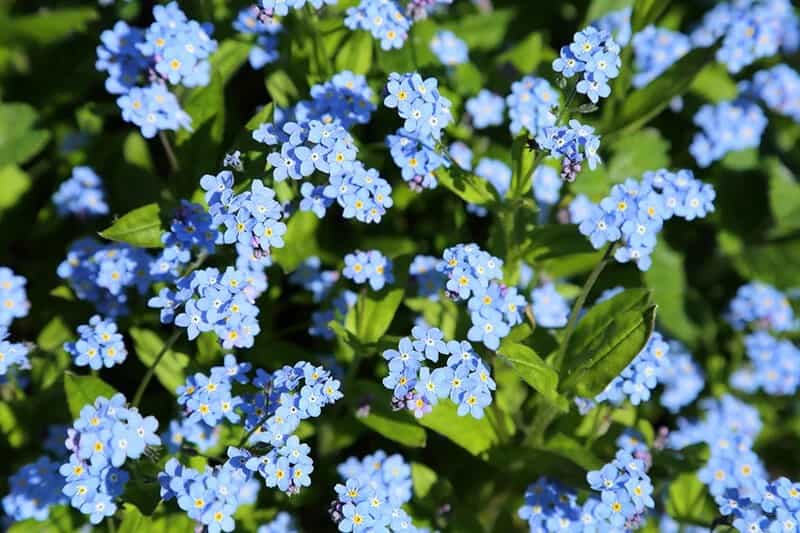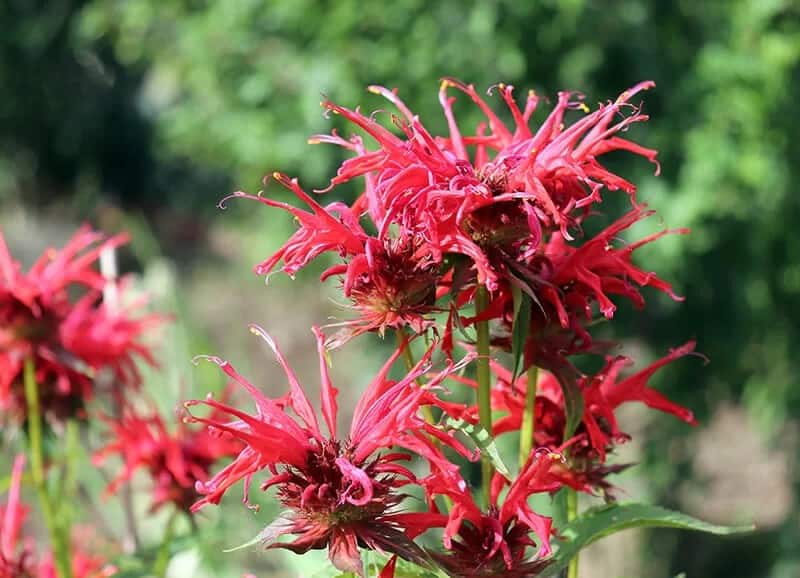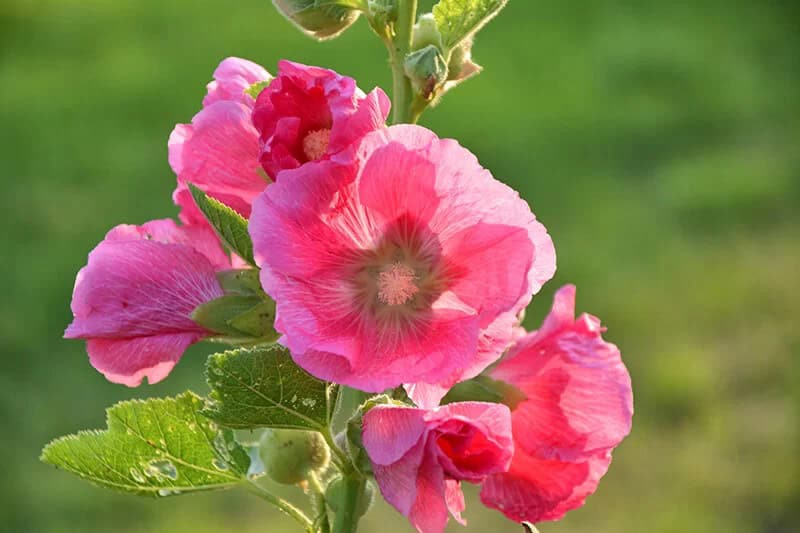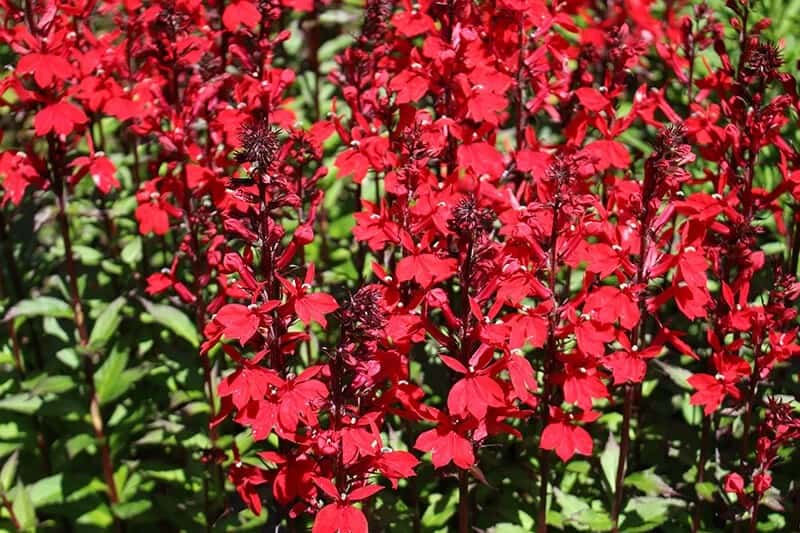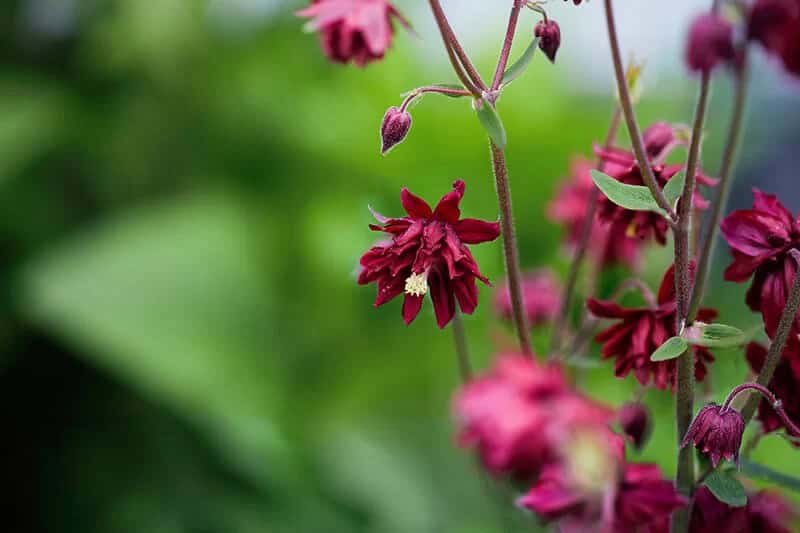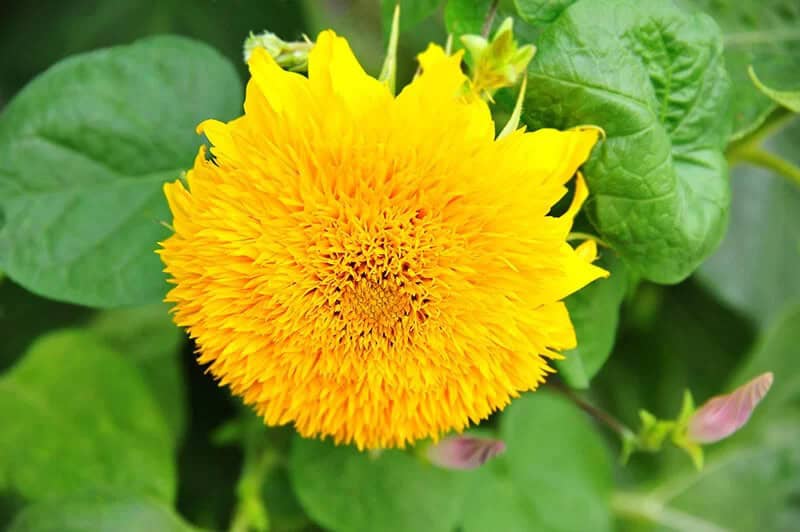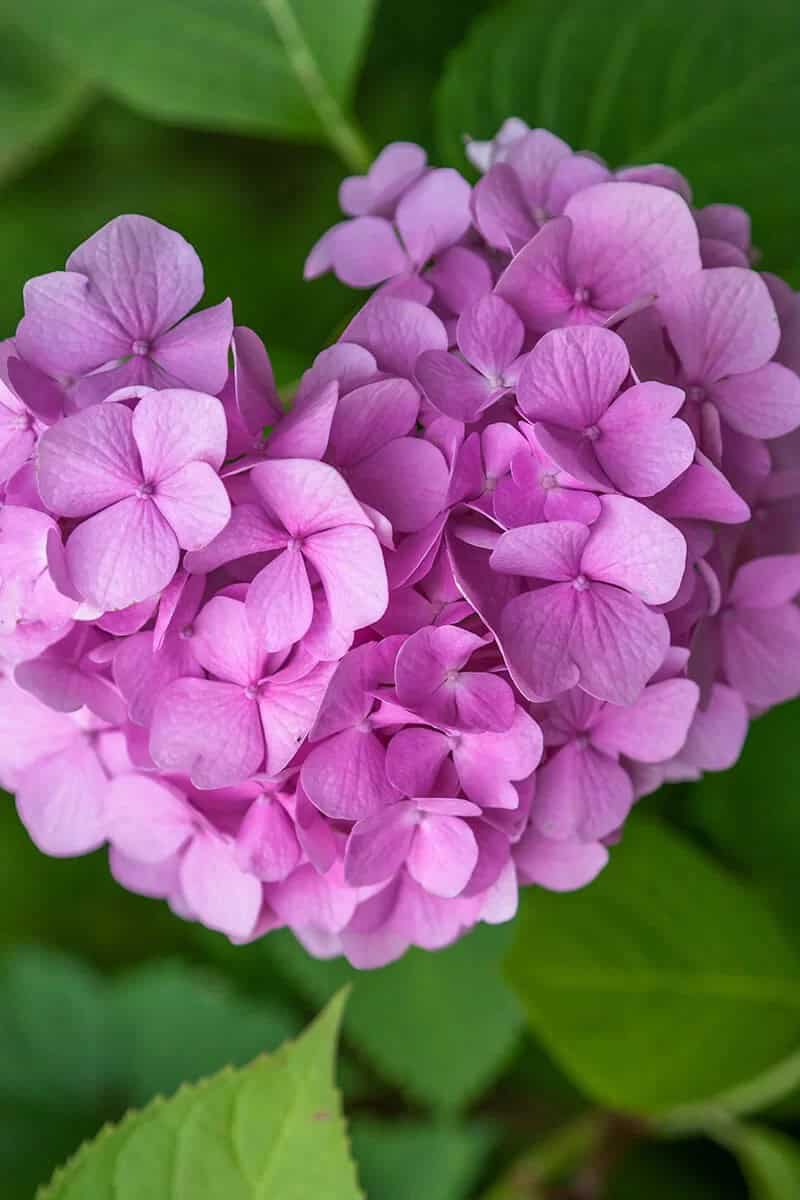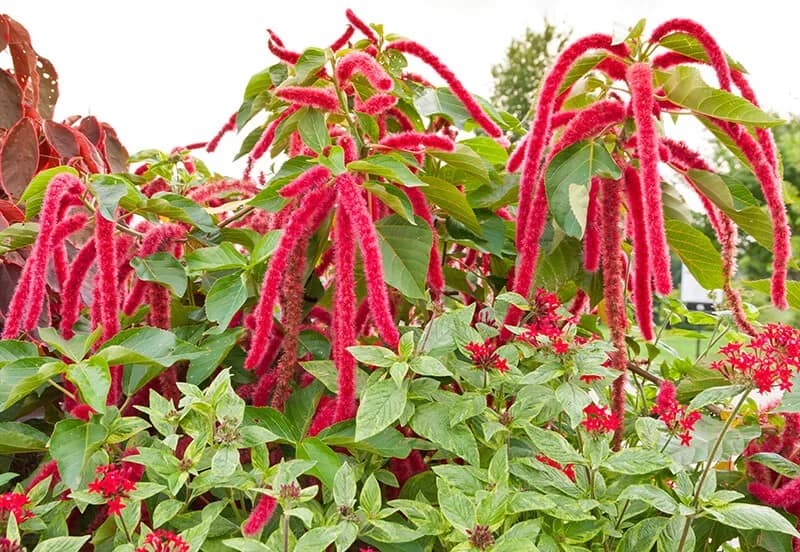Outdoor spaces can be transformed into vibrant oases with the addition of colorful flowers. Whether you’re working within a specific color palette or simply appreciate the beauty of all hues, incorporating a few poppy blooms can add depth and visual interest to your garden. The key is finding ways to seamlessly integrate these colorful accents into your existing design.
The Top 27 Colorful Flowers to Plant in Your Garden for an Energizing Sanctuary
When it comes to incorporating color into your landscape, the possibilities are truly endless. One approach is to unleash a burst of energy by filling the space with vibrant neon blooms. Alternatively, if you’re drawn to richer, more jewel-toned hues, there’s no shortage of beautiful floral options to choose from. The key is to strike a balance between bold and subtle choices, allowing for a dynamic display that can be enjoyed throughout the seasons.
Common Foxglove (Digitalis Purpurea: Excelsior Group)
Common Foxglove is a showstopping addition to any garden, boasting tall spires of striking flowers that make an excellent architectural feature. As biennial perennials, these plants have a unique growth pattern – in the first year, you’ll see only foliage, but in the second year, the flowers will burst forth in all their glory. If left to self-seed, Common Foxglove can give the appearance of being a long-lived perennial.
It’s relatively low maintenance, requiring medium water levels, fertile and acidic soil with good drainage, and full sun to part shade. Blooming occurs from June to July, making it an excellent choice for gardeners in USDA growing zones 4-8.
Lantana (Lantana Camara)
Lantana is often synonymous with vibrancy and vitality, characterized by its stunning array of colors. The flower’s vibrant hues, which typically include yellow, orange, red, and purple, are frequently displayed in the same cluster, creating a kaleidoscope-like effect. While it thrives in warmer climates, lantana can still be cultivated as an annual in temperate zones. In terms of its growing requirements, lantana needs medium levels of water, average soil with good drainage, and full sun.
It’s also suitable for USDA hardiness zones 10 to 11. The plant blooms throughout July until the first frost, adding a pop of color to any garden or outdoor space.
Grape Hyacinth (Muscari Armeniacum ‘Christmas Pearl’)
The symbolism surrounding the grape hyacinth is deeply rooted in wisdom and tranquility, evoking a sense of calmness. In terms of its environmental needs, this plant requires medium amounts of water, with average soils that drain well being the ideal. It thrives in USDA growing zones 4 to 8 and can tolerate a range of light conditions, from full sun to partial shade.
As spring begins to bloom, typically around March or April, the grape hyacinth displays its stunning display of violet-blue flowers, featuring an ombre effect with darker blue hues towards the bottom. This unique feature sets it apart from other types, making ‘Christmas Pearl’ a standout choice for early bloomers, effectively chasing away winter’s chill and ushering in the new season.
Viola (Viola Cornuta)
Violas, with their delicate appearance and vibrant hues, are an excellent choice to bridge the gap between spring and summer’s lush blooms. These pansy-like flowers boast a range of colors, often featuring striking bi-color patterns, and reach only 12 inches in height, making them an ideal addition for areas where taller blooms won’t fit. Symbolically, violas represent innocence, modesty, and decency, adding a touch of elegance to any garden.
They require medium watering, thrive in fertile soil with good drainage, and can be grown in zones 6-11. In full sun to part shade, violas will burst into bloom between April and June, providing a delightful splash of color to your outdoor space.
Purple Coneflower (Echinacea Purpurea ‘Raspberry Truffle’)
The purple coneflower, with its showy pom-pom center and ray-like petals, is a stunning addition to any garden. As a native wildflower, it’s remarkably adaptable to different growing conditions. Its symbolism is rooted in spiritual healing, strength, and recovery. This versatile flower can thrive in dry to medium soil, tolerating drought and poor soil types with average drainage. It grows best in zones 3 to 8, where it receives full sun to partial shade.
Blooming season typically runs from June to August, although occasional flowers may appear until the first frost.
Tetraploid Daylily (Hemerocallis ‘Aztec Priestess’)
Daylilies may be renowned for their breathtaking blooms, but what’s equally impressive is how effortless they are to cultivate. The ‘Aztec Priestess’ variety, boasting a unique combination of green throat, red-striped orange petals, and subtle yellow ruffling along the edges, is no exception. This stunning specimen thrives in well-drained soil with average conditions, basking in the warmth of full sun to partial shade.
As the seasons unfold, you can expect a vibrant display of color from June to August, adding an exciting splash to your garden design without requiring excessive upkeep.
Bachelor’s Button (Centaurea Cyanus)
Bachelor’s buttons, with their vibrant blue hues, bring a sense of hopefulness and youthful energy to any landscape. The symbolism behind this flower is deeply rooted in love, passion, and healing, making it a popular choice for many gardeners. With medium watering needs and an ability to thrive in average soils with good drainage, these flowers are relatively easy to care for.
They can even tolerate poor soil conditions, making them a great option for those who may not have the most ideal growing conditions. The growing zones for bachelor’s buttons range from 2 to 11, allowing gardeners across North America to enjoy their beauty. Full sun is all this flower needs to produce its stunning blooms, which typically take place from May to July.
As an added bonus, birds and butterflies are naturally drawn to these delicate blue flowers, making them a great choice for cottage gardens and prairie-themed spaces.
Floribunda Rose (Rosa ‘Wekplapep’ Scentimental)
The bi-color rose is a stunning addition to any garden, boasting innocent love, femininity, beauty, and romance through its symbolism. This versatile bloom requires medium water levels and thrives in slightly acidic soil with good drainage. Gardeners in USDA zones 4 to 9 can grow this delightful flower with ease, while those in warmer climates will appreciate the full sun it needs to flourish.
The blooming season typically runs from May until frost, making it a lovely addition to any outdoor space.
Spring Crocus (Crocus Vernus ‘Pickwick’)
The arrival of spring is marked by the blooming of the spring crocus, one of the first flowers to signal the end of winter’s chill. The ‘Pickwick’ variety stands out with its delicate purple pattern on a crisp white background, offering a beautiful display of color. While some varieties may boast bright yellow or regal purple hues, the intricate striping of this particular cultivar draws the eye to its rich purple tone.
Characterized by its medium water needs, gritty soil with good drainage, and full sun to part shade light requirements, spring crocus thrives in growing zones 3 to 8, typically blooming in April.
Petunia (Petunia)
Petunias are renowned for their vibrant colors and perpetual blooms, making them a top choice among garden enthusiasts. With an extensive range of hues – excluding only black and brown – these flowers can add a pop of color to any outdoor space. Furthermore, many bi-color options are available, allowing for even greater customization. Notably, petunias emit a subtle fragrance, providing an added sensory experience.
As they thrive in zones 10-11, petunias require medium watering, average soil with good drainage, and can tolerate poor soil types. Full sun to part shade is ideal, with blooming season extending from May until the first frost.
French Marigold (Tagetes Patula)
With its vibrant colors ranging from bright yellow to rich burgundy, marigold is an excellent addition to any landscape. This low-maintenance flower thrives in medium water conditions and tolerates clay soil, making it a great choice for gardeners of all levels. Marigolds prefer full sun and can be grown in zones 2 to 11, with the blooming season typically extending from June until frost.
One of its most appealing features is its ability to self-regulate its growth, only reaching about 12 inches in height, making it an ideal border option. While it may experience a temporary slowdown during hot summer months, the flowers will rebound and reappear in full force as the weather cools.
China Aster (Callistephus Chinensis)
China asters are a popular choice for adding vibrant colors to any garden. Their symbolic meaning is multifaceted, representing patient elegance, love, wisdom, and faith. These flowers require medium watering, thriving in fertile soil with good drainage. They can be grown in USDA zones 2 through 11, making them a versatile option for many regions. China asters need full sun to partial shade, and their blooming season typically runs from July to September.
As an added bonus, these flowers come in a range of colors including red, pink, violet, blue, purple, and yellow, offering plenty of opportunities for creative garden design. If left unchecked, China aster plants can grow quite tall, so consider staking them to keep them upright.
Dahlia (Dahlia)
Dahlias, with their majestic blooms and statuesque stems, exude a sense of dignified elegance and sophistication. These stunning flowers are not only a symbol of wealth and refinement but also of love and commitment. With medium water requirements, they thrive in fertile soils that provide good drainage. Gardeners in USDA growing zones 7 to 10 can enjoy the vibrant display of dahlias from July to September when the flowers are in full bloom.
While they do require some extra care, such as staking and deadheading, the effort is well worth it for the kaleidoscope of colors they bring to your garden. With a range of hues including red, pink, purple, orange, yellow, and even bi-colored varieties, you’re sure to find the perfect dahlia to complement your unique color palette when planted in groups of at least five.
Checkered Lily (Fritillaria Meleagris)
While vibrant hues can certainly brighten up a garden, sometimes a more subtle approach is desired. Enter the checkered lily, whose understated elegance and refined beauty belie its ability to add a touch of sophistication to any landscape. The delicate white checkerboard pattern provides a stunning backdrop for the soft purple hue, creating an atmosphere that’s both calming and intriguing.
And as if this weren’t enough, checkered lilies are also low-maintenance plants that can thrive in a variety of conditions – they require medium watering, fertile soils with good drainage, and can tolerate full sun to part shade. Whether you’re looking to add some visual interest or simply enjoy the beauty of nature without too much fuss, the checkered lily is an excellent choice for gardeners of all levels.
Black-Eyed Susan (Rudbeckia Hirta ‘Cappuccino’)
Black-eyed Susans, known for their symbolic meaning of friendship, encouragement, and motivation, thrive in a wide range of conditions. Medium water needs allow them to tolerate some drought, while average soils with good drainage are ideal. However, they can also adapt to clay soil if needed. This hardy wildflower is native to the sweeping United States prairies and grows well in zones 3 to 8.
Full sun is necessary for optimal growth, and a beautiful blooming season from June until frost showcases their striking copper and burgundy pigmentation.
Azalea (Rhododendron ‘Gibraltar’)
Azaleas, a staple in many spring gardens, boast vibrant colors and a reputation for consistency. The ‘Gibraltar’ cultivar stands out with its bright orange blooms that seem almost luminescent. This variety earned recognition as the Rhododendron of the Year by the American Rhododendron Society in 2009. Beyond its stunning appearance, ‘Gibraltar’ requires medium water levels and slightly acidic fertile soil with good drainage to thrive.
Its ideal growing zones range from 5 to 8, making it suitable for temperate climates. This azalea prefers part shade and blooms from April to May, creating a beautiful display in any garden.
Forget-Me-Not (Myosotis Sylvatica ‘Victoria Blue’)
Forget-Me-Nots boast an iconic blue hue that has become synonymous with true love and respect. These dainty biennials bloom in the year following planting, making them a delightful addition to any springtime display. To create a show-stopping spectacle, consider interplanting Forget-Me-Nots with other spring bulbs. Notably, ‘Victoria Blue’ is slightly more compact than its species counterpart, making it an ideal choice for edging or border plantings.
With medium water requirements and a preference for fertile soil with good drainage, Forget-Me-Nots thrive in zones 3 to 8, where they can bask in full sun to partial shade. In the spring, from April to May, these charming flowers come into bloom.
Blanket Flower (Gaillardia Aristata Barbican Yellow Red Ring)
Cultivating a vibrant display of color in your garden doesn’t have to require a lot of maintenance or resources. Native wildflowers like the Blanket Flower (Gaillardia x grandiflora) are a great option, producing an abundance of persistent flowers with minimal watering needs. In fact, this hardy perennial can thrive in dry to medium soil conditions and tolerate drought, making it an eco-friendly choice for gardeners.
With average soils that drain well and full sun exposure, the Blanket Flower will bloom from May to September, providing a stunning display of color throughout the growing seasons (4-9). Not only do these flowers bring joy and happiness to your outdoor space, but they also symbolize good luck, modesty, and charm in many cultures.
Whether you’re looking for an easy-to-care-for addition to your garden or seeking a way to bring a touch of native beauty into your landscape, the Blanket Flower is a great choice.
Bee Balm (Monarda Didyma)
Bee balm, with its striking red flowers, is more than just a visually appealing addition to any landscape. The symbolism behind this herb is also noteworthy, as it’s said to bring soothing qualities, sympathy, clarity of thought, prosperity, and protection. In terms of its growing needs, bee balm requires medium watering and does well in fertile soils that retain moisture. It can even tolerate clay soil, making it a versatile option for gardeners.
The ideal growing zones for this herb are 4 to 9, and it thrives in full sun to part shade conditions. During the summer months of July and August, bee balm produces an abundance of bright scarlet blooms that will attract butterflies, hummingbirds, and bees. By planting en masse, you can enjoy a diverse array of pollinators, or choose to plant individually for a stunning summertime display. If red isn’t your cup of tea, there are also cultivars available with pink or lavender flowers.
Hollyhock (Alcea Rosea)
The majestic hollyhock is a staple in traditional gardening, boasting a unique shape and impressive height that makes it an ideal choice for adding depth and grandeur to any landscape. The vibrant blooms of these flowers come in a range of colors, including white, red, pink, and yellow, offering gardeners ample opportunities to add a pop of color to their design.
With their moderate water requirements, ability to thrive in average soils with good drainage, and tolerance for a wide variety of soil types, hollyhocks are surprisingly easy to grow. They also enjoy full sun and produce flowers from June to August, making them an excellent choice for adding a dramatic touch to any garden. Whether used as a border or background element, hollyhocks are sure to make a statement.
Carolina Yellow Jasmine (Gelsemium Sempervirens)
As the last wisps of winter’s chill dissipate, the vibrant hues of spring burst forth, casting a warm glow over the landscape. The sight of these radiant blooms – characterized by bright yellow petals and lush green foliage – is all the more breathtaking after the bleakness of winter. Like many climbing vines, Carolina yellow jasmine has the ability to create immersive, tapestry-like landscapes when provided with a structure upon which to ascend.
Scarlet Lobelia (Lobelia Cardinalis)
The iconic scarlet lobelia boasts a vibrant red hue, symbolizing splendor, dignity, and distinction. As a medium to wet-loving species, it thrives in environments with brief flooding periods. To support its growth, rich, water-retentive soils are ideal. This flowering beauty is suitable for zones 3 to 9, where it can bask in full sun to partial shade. Its blooming period typically spans from July to September, making it a stunning addition to gardens that never fully dry out.
As such, scarlet lobelia is an excellent choice for rain gardens and water features, attracting hummingbirds and butterflies to your outdoor space.
Columbine (Aquilegia Vulgaris var. Stellata ‘Ruby Port’)
The ‘Ruby Port’ columbine, a French heirloom, boasts stunning ruby-red flowers that add an air of sophistication to any garden. This versatile flower not only attracts hummingbirds but also comes in a range of colors for those who prefer something different. With its impressive display, it’s no wonder this perennial has become a staple in many gardens. The symbolism behind the columbine is one of endurance and perseverance, making it a thoughtful addition to any outdoor space.
In terms of growing conditions, ‘Ruby Port’ requires medium watering needs, average soil with good drainage, and can thrive in zones 3 to 8. It prefers full sun to part shade and blooms from April to May.
Sunflower (Helianthus ‘Happy Days’)
Sunflowers bring a burst of vibrant yellow to late summer and early fall, their iconic blooms often featuring an expansive brown center surrounded by ray-like petals. While they’re commonly associated with traditional single-petaled varieties, sunflowers can actually come in a range of shapes and colors, including impressive double flowers like the one pictured.
Despite their showy appearance, these bright beauties have some practical requirements to thrive – they need medium watering, average soils with good drainage, full sun, and a growing zone between 5 and 9.
Bearded Iris (Iris Germanica)
The majestic bearded iris is more than just a fleeting flash of beauty – it’s a symbol of fiery courage, wisdom, hope, trust, and valor. This stunning bloom requires some specific conditions to thrive: medium water needs, fertile soils with excellent drainage, and full sun. With growing zones ranging from 3 to 10, it’s accessible to many gardeners.
While its blooming season is short-lived, typically occurring in May, the vibrant flowers that emerge during this time are sure to make a lasting impression.
One of the greatest joys of growing bearded irises is the sheer variety available. With an array of colors, forms, and patterns to choose from, you’re bound to find a flower that perfectly complements your garden’s color scheme.
Bigleaf Hydrangea (Hydrangea Macrophylla)
The humble bigleaf hydrangea has a unique characteristic – its flower color is influenced by the soil chemistry rather than genetics like most plants. This means that with a little creativity, you can actually alter the hue of your blooms! 🌼 To get blue flowers, aim for an alkaline soil condition; if you prefer pink hues, opt for acidic soil. The possibilities are endless, as the flower color will fall somewhere on the spectrum between blue and purple.
💧 Watering this plant requires a medium amount, while it thrives in fertile soil with good drainage. As for growing zones, bigleaf hydrangea is perfectly comfortable in zones 5 to 11. ☀️ Be mindful of providing partial shade to full shade, as direct sunlight can cause the flowers to fade. Lastly, expect seasonally recurring blooms.
Love-Lies-Bleeding (Amaranthus Caudatus)
Imagine a vibrant splash of color cascading down the sides of your evergreen trees or containers. Love-lies-bleeding (Amaranth caudatus) is a unique and eye-catching annual flower that’s sure to draw attention in your garden. Its striking pink blooms resemble waterfalls, hence its common name. Not only are they visually stunning, but they also retain their color when dried, making them an excellent choice for cut-flower arrangements.
Love-lies-bleeding thrives in a range of conditions, tolerating medium watering and average soils with good drainage. It’s also adaptable to various light levels, from full sun to partial shade, and can be grown in zones 2 through 11. As a bonus, it blooms from July until frost, providing a long period of color and interest in your garden.
27 Remarkable Types of Colorful Flowers to Plant for the Perfect Mix of Classics and Fresh New Friends
When planning your flower arrangement, consider the blooming schedule as the conductor of a symphony. Ensure that flowers with complementary colors like blue and yellow are in bloom simultaneously, creating harmonious combinations that unfold like a musical composition. As the maestro, you orchestrate which flowers take center stage, choosing focal points that set the tone for your garden.
To create an immersive experience, balance bold blooms with subtle whites or let your creativity soar with a kaleidoscope of colors.
